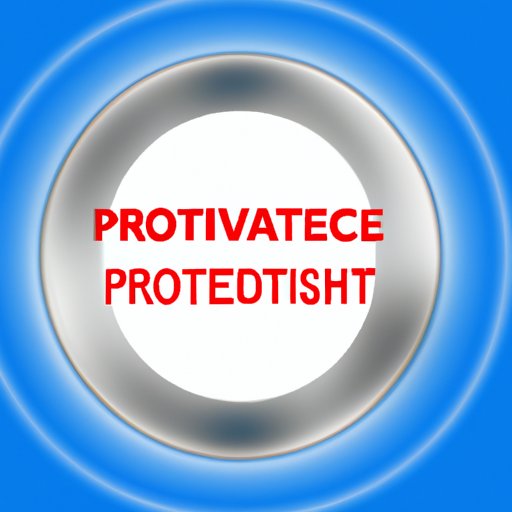I. Introduction
Protecting your invention is crucial for any inventor. Without legal protection, your idea can be stolen or copied, ultimately damaging your reputation, hard work and investment. Therefore, it is essential to safeguard your intellectual property, as it allows you to maintain ownership and control over your invention and reap the benefits of your hard work. However, there are various challenges and obstacles that inventors face when trying to protect their intellectual property. In this article, we will explore the top five ways to protect your invention and how to navigate the legal system to ensure that your intellectual property is secure.
II. Don’t Hold Back: Top 5 Steps to Safeguarding Your Invention
When it comes to protecting your invention, there are several common ways to secure your intellectual property such as patents, trademarks, and copyrights. Patents are generally used to protect ideas, processes, and machines. Trademarks are used to protect names, logos, and symbols that identify a product or company. Copyrights are used to protect original works of authorship, such as books, songs, and movies.
It is crucial to understand the benefits of each form of protection and when they are most appropriate. Patents, for instance, offer protection for a limited time, and typically it takes around 18 months to receive a patent. On the other hand, trademarks can last indefinitely as long as they are still used, while copyrights generally last for the lifetime of the creator plus 70 years. It’s important to note that these three protections have different criteria for protection.
III. The Art of Non-Disclosure: Keeping Your Invention Under Wraps
One key strategy for protecting your invention is not to sharing information about it until they are legally protected. Non-disclosure agreements and confidentiality agreements are especially useful in this situation. As an inventor, it is essential to control who can see or hear your project ideas and progress. A confidentiality agreement is a promise by a third party not to reveal any information shared with them, while a non-disclosure agreement (NDA) legally binds both parties not to disclose any confidential information shared between them.
IV. Secure Your Intellectual Property: Navigating Legal Protections
It is important to understand the legal protections available for inventors. Patents are widely used and offer a strong level of defense for your invention. However, obtaining patent protection is a complicated and lengthy process that typically involves lawyers, patent agents, and the United States Patent and Trademark Office (USPTO). Another option is to pursue a trademark by filing an application with the USPTO. Before filing for trademark protection, conduct thorough research to avoid any label, or symbol that is already protected. Lastly, copyrights can protect the original work of authorship such as literary, musical, or artistic works.
V. Preparing for Success: The Importance of a Solid Invention Disclosure Document
Regardless of the legal protection method that you choose, it is essential to have a well-crafted Invention Disclosure Document in place. This document records the entire process of making your invention and its specific features. By having this document, you can provide detailed information and proof of ownership to justify your claim to an invention should disputes arise. A disclosure document may also contain trade secrets, such as strategies or formulas that have significant potential economic value. A patent may not protect trade secrets, but having a well-designed confidentiality agreement in place can prevent unauthorized use of any protected content.
VI. Sharing for Success: Navigating Licensing Agreements
Licensing agreements can be a promising option for inventors who want to gain legal protection and generate income. By licensing the use of your invention, you retain ownership while allowing others to use it for a designated period. A licensing agreement is essentially a contract between you and the licensee, which outlines the terms of use, royalties, and duration of use. It’s important to consider key factors when negotiating licensing agreements, such as the accuracy of the contract language, royalties, liabilities, and conditions for cancellation.
VII. Your Next Steps: When All Else Fails
If none of these legal protection options work for you, there are still other avenues available to protect your intellectual property. One alternative option is to use alternative dispute resolution methods, such as mediation and arbitration. Mediation is when both parties work with a neutral third party to come to a mutually agreeable solution, while arbitration is when a third party makes a final decision that both parties must accept. These options tend to be less expensive than a legal battle and can be a viable option for inventors who want to avoid the hassle of navigating the legal system.
VIII. Conclusion
Protecting your invention is crucial for your success as an inventor. Legal protection methods such as patents, trademarks, and copyrights provide inventors with a way to maintain ownership and reap the benefits of their inventions. To protect your invention, you should also consider non-disclosure agreements and confidentiality agreements, licensing agreements, and alternative dispute resolution methods. By taking the proper precautions, you can safeguard your intellectual property and achieve success as an inventor.
(Note: Is this article not meeting your expectations? Do you have knowledge or insights to share? Unlock new opportunities and expand your reach by joining our authors team. Click Registration to join us and share your expertise with our readers.)
